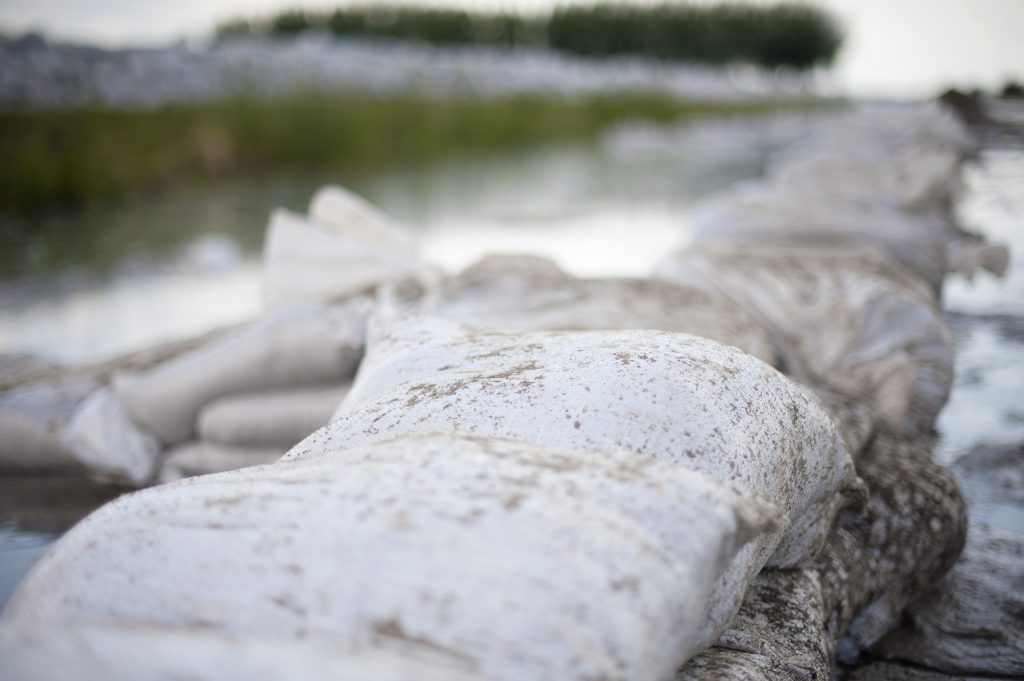Officials say flood zone property estimates likely overstated in Quebec

Posted November 23, 2024 12:30 pm.
Last Updated November 24, 2024 1:41 pm.
MONTREAL — The Quebec Ministry of the Environment likely overestimated the number of properties located in flood zones following the modernization of flood mapping, according to officials who sought to ease concerns about new regulations on Friday.
In June, the Ministry estimated that three times more Quebecers would be living in flood-prone areas under the updated mapping system. Around 22,000 homes in Quebec were already known to be in flood zones, but under the new maps, an estimated 77,000 properties—approximately 2% of the population—would fall within such areas.
However, on Friday morning, ministry officials clarified that these figures would likely be revised downward. Deputy Minister Jean Bissonnette explained that the regulatory impact analysis accompanying the new regulations should show the actual number of properties in flood zones is much lower than previously estimated.
He attributed the initial overestimate to urban communities misjudging the impact of the new maps when they communicated with the ministry earlier this year.
No final estimate has been provided on the exact number of properties that will fall within flood zones once the new maps are completed.
Property Value and Insurance Concerns
Since the launch of a public consultation on the new flood mapping system six months ago, many elected officials have expressed concern about the impact these changes could have on property values.
Pointe-Calumet Mayor Sonia Fontaine, for example, voiced her concerns to La Presse Canadienne in June after reviewing the preliminary maps, saying that homeowners might wake up one morning to find their property values plummeting, with mortgage and insurance uncertainties.
More recently, the Quebec Professional Association of Real Estate Brokers (APCIQ) issued a statement warning that homeowners in newly designated flood-prone areas could face major obstacles when trying to sell their properties. Even if the risk of flooding is low, the perception alone could deter potential buyers, the association said.
In response to these concerns, Bissonnette attempted to downplay the fears. He cited a 2022 analysis by the research group Ouranos, which found that homes in flood-prone areas experience a temporary depreciation in value—ranging from 4% to 8%—and remain on the market between two and three weeks longer than other properties.
As for insurance, Bissonnette pointed out that home insurance policies do not automatically cover flood damage, which is why the Ministry of Public Security provides flood-related compensation. However, he explained, homeowners can purchase additional coverage, called a rider, to protect against flood risks.
According to the Insurance Bureau of Canada, 90% of homeowners in Quebec have access to such riders, though only 60% have requested them.
Four Risk Categories for Flood Zones
The new flood maps will classify flood risk into four categories: low, moderate, high, and very high. Each risk category will be represented by a different color. For example, properties with a “very high” risk of flooding would face a more than 70% chance of being inundated at least once within 25 years, with water levels exceeding 60 cm during a flood event.
The risk categories will influence construction and renovation rules for properties within these zones. For instance, homeowners in a “very high” risk area would not be allowed to build new homes or rebuild properties that were destroyed.
New Flood Protection Infrastructure Regulations
The Ministry is also considering revising certain aspects of the regulations regarding flood protection infrastructure (OPIs), such as dikes or floodwalls.
Under the initial government plan, areas located behind these protective structures would automatically be classified as “high” or “very high” risk zones. However, the revised regulations suggest that municipalities would need to conduct a study of the flood protection infrastructure before the risk level could be reassessed.
This part of the regulation has drawn criticism, particularly from the Montreal Metropolitan Community (CMM), which argued that conducting such studies could be costly and time-consuming. Furthermore, the mere classification of an area as “high risk” could create uncertainty for residents and negatively impact property values.
The CMM has suggested that the Ministry introduce a separate risk category for areas located behind flood protection structures, to avoid unfairly classifying neighborhoods as high-risk. Bissonnette stated that this recommendation is being evaluated.
Next Steps
Public consultations on the regulations ended several weeks ago, and the regulatory framework is expected to be adopted in spring 2025. There will be a roughly six-month transition period between adoption and implementation, meaning the new regulations could come into effect in the fall of 2025.
Meanwhile, municipalities must prepare new flood zone maps according to the Ministry’s methodology and submit them for provincial approval. The Montreal Metropolitan Community has already published preliminary versions of its maps online.
–This report by La Presse Canadienne was translated by CityNews








